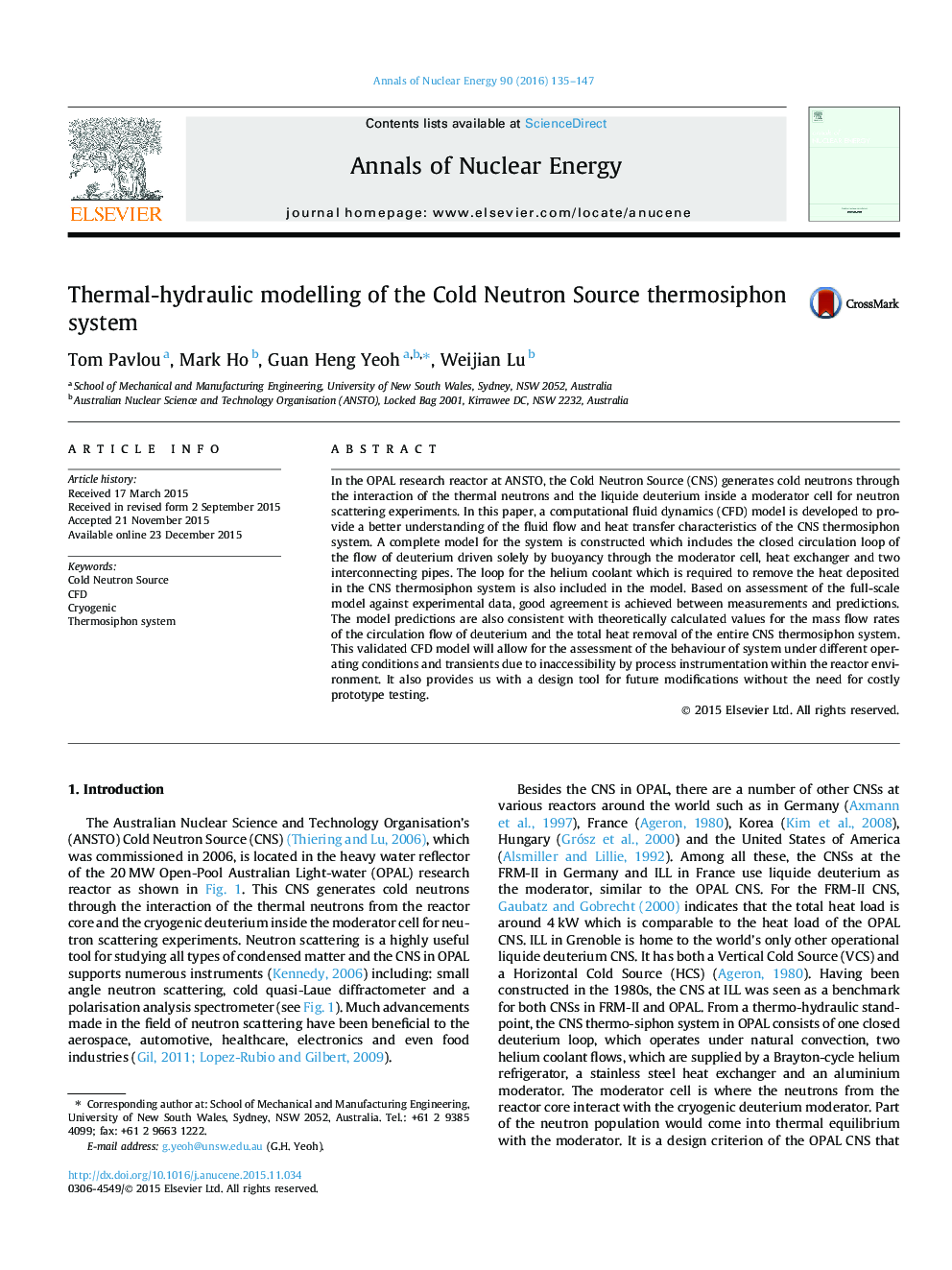| کد مقاله | کد نشریه | سال انتشار | مقاله انگلیسی | نسخه تمام متن |
|---|---|---|---|---|
| 1727918 | 1521107 | 2016 | 13 صفحه PDF | دانلود رایگان |
• Thermal-hydraulics modelling of the CNS thermosiphon system.
• Comprehensive CFD model for the prediction of deuterium and helium flow.
• Characterisation of natural and forced convection flows and conjugate heat transfer.
• Ability of CFD model to predict the proper mass low rates and total heat removal of the entire system.
In the OPAL research reactor at ANSTO, the Cold Neutron Source (CNS) generates cold neutrons through the interaction of the thermal neutrons and the liquide deuterium inside a moderator cell for neutron scattering experiments. In this paper, a computational fluid dynamics (CFD) model is developed to provide a better understanding of the fluid flow and heat transfer characteristics of the CNS thermosiphon system. A complete model for the system is constructed which includes the closed circulation loop of the flow of deuterium driven solely by buoyancy through the moderator cell, heat exchanger and two interconnecting pipes. The loop for the helium coolant which is required to remove the heat deposited in the CNS thermosiphon system is also included in the model. Based on assessment of the full-scale model against experimental data, good agreement is achieved between measurements and predictions. The model predictions are also consistent with theoretically calculated values for the mass flow rates of the circulation flow of deuterium and the total heat removal of the entire CNS thermosiphon system. This validated CFD model will allow for the assessment of the behaviour of system under different operating conditions and transients due to inaccessibility by process instrumentation within the reactor environment. It also provides us with a design tool for future modifications without the need for costly prototype testing.
Journal: Annals of Nuclear Energy - Volume 90, April 2016, Pages 135–147
